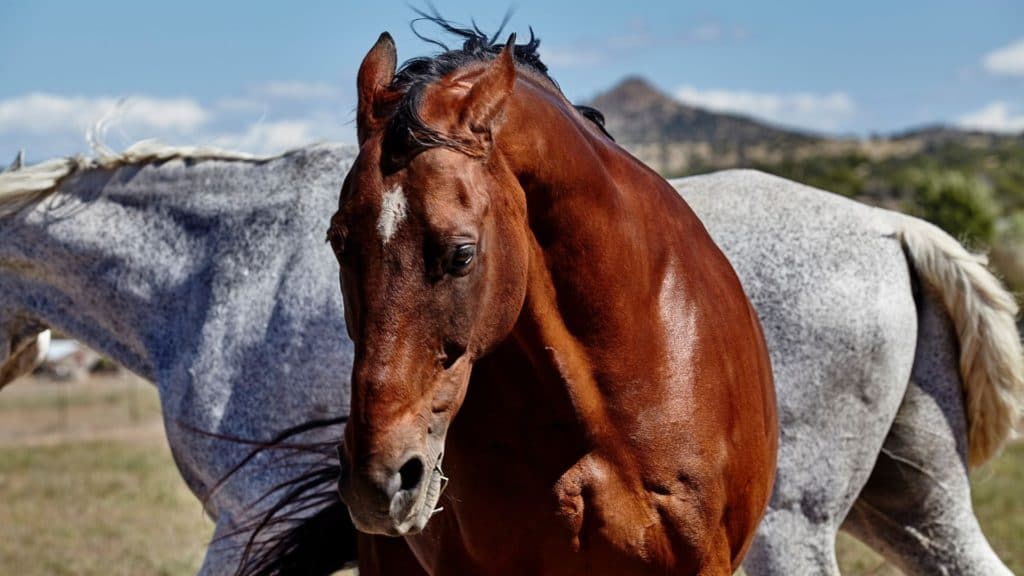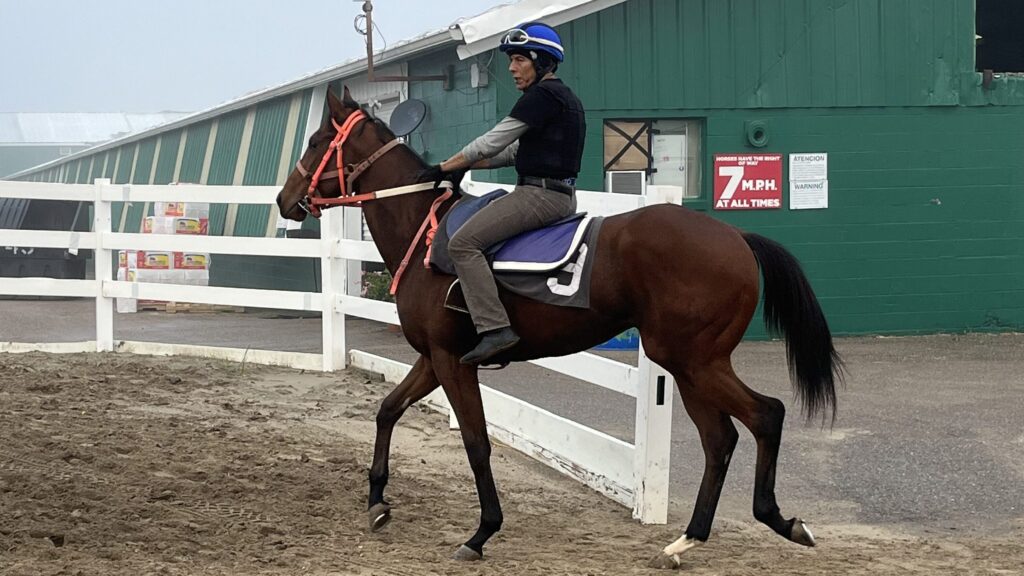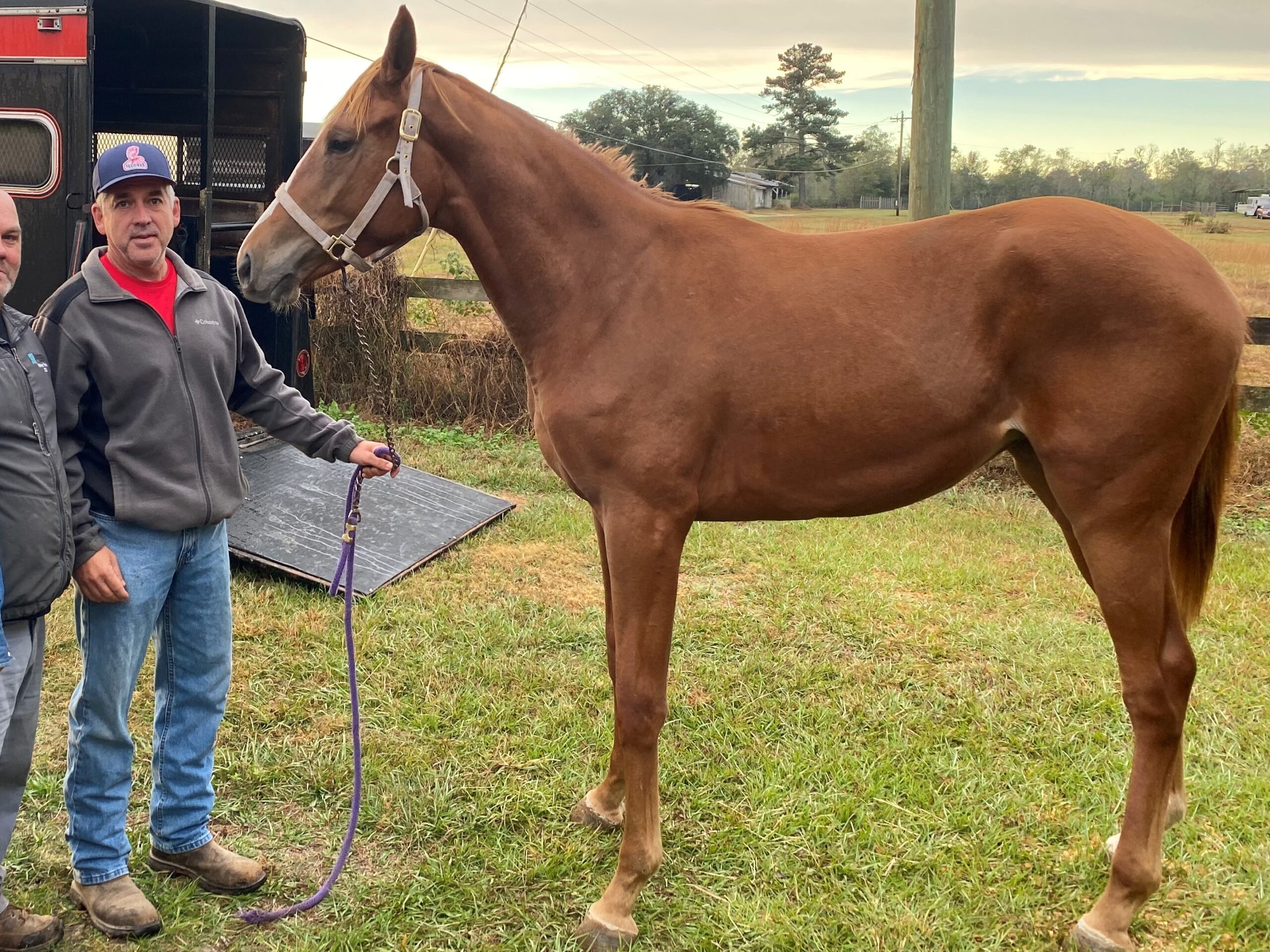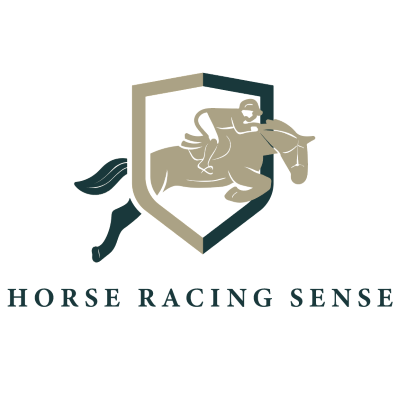Last updated: January 31, 2025
Horses are incredibly expressive animals that rely on vocalizations, body language, and touch to communicate. As a lifelong horseman, I’ve learned that understanding these cues is crucial for training, safety, and bonding with your horse. In this guide, I’ll share my expertise on how horses communicate with each other and humans—helping you interpret their behaviors more effectively.

The Importance of Understanding Horse Communication
Have you ever noticed how a horse’s ears, tail, or even eyes can reveal its emotions before it even makes a sound? Horses are highly social herd animals, evolved to use complex, non-verbal communication for survival. Research suggests they use over 17 distinct facial expressions—more than dogs and even some primates! (CNN) This means horses rely on subtle visual cues as much as vocalizations to interact with each other and humans.
Whether you’re handling horses daily or simply observing them, understanding their language strengthens trust, improves training, and enhances safety. By recognizing their body language, vocal cues, and touch-based signals, you can build a deeper, more effective connection.
In the following sections, we’ll break down the key ways horses communicate and how recognizing these signals can improve your bond with them.
Horse Vocalizations – Understanding Their Sounds & Meanings
Horses use various sounds to communicate emotions, intentions, and warnings. Recognizing these vocal cues can help horse owners respond appropriately and strengthen their bond with their animals. Below are the most common vocalizations and what they typically mean.
Whinnying or Neighing
This is one of the most recognizable horse sounds, and its meaning depends on tone, duration, and context.
- A short, high-pitched whinny often serves as a greeting or a way to locate herd members.
- A loud, prolonged whinny often signals distress, loneliness, or pain. Research confirms that horses can distinguish between happy and anxious whinnies—a key aspect of how they communicate with their herd. (ScienceDirect)
- Stallions and mares may use loud, prolonged whinnies during mating to communicate readiness or attraction.

Nickering
A soft, low-pitched sound, nickering is typically a friendly message between horses and their human companions.
- Horses often nicker when anticipating food or greeting a familiar person.
- A mare may nicker to her foal, encouraging closeness and security.
Snorting
A short, forceful exhale through the nostrils, snorting often indicates alertness or serves as a warning.
- A quick snort suggests curiosity or mild surprise.
- Repeated snorting, especially accompanied by stiff body language, signals potential danger. (For more on warning signs in horses, see Dangerous Horse Alerts & Warning Signs).
- Excessive snorting with nasal discharge may indicate respiratory issues requiring veterinary attention.
Listen to a horse squeal in this YouTube video below.
Squealing
A high-pitched, sharp vocalization, squealing can mean different things depending on the situation:
- Excitement or playfulness, especially in younger horses.
- Fear or distress when startled or in an unfamiliar environment.
- Aggression or dominance, often seen when horses establish pecking order in a herd.
- Mares may squeal in response to stallions during mating behavior.
💡 Note: Each horse has its own unique vocal style—some may be more vocal than others. Learning your horse’s individual vocal cues helps you better understand their needs, emotions, and potential health concerns.

Horse Body Language – Key Signs & What They Mean
Horses rely heavily on body language to express emotions, intentions, and even discomfort. Their movements, posture, and facial expressions provide valuable insights into how they feel. Learning to interpret these signals can enhance safety, improve communication, and strengthen the horse-human bond.
Ears: The First Indicator of Mood
A horse’s ears are one of the most expressive parts of their body, often indicating focus, mood, or warning signs. (Horse Ear Positions Explained)
- Ears forward → Indicates curiosity, attentiveness, or excitement.
- Ears moving in different directions → Shows confusion or divided attention.
- Ears pinned back flat → A sign of aggression, irritation, or fear—approach with caution.
- Relaxed ears, slightly apart → Suggests a calm and comfortable horse.
Tail Movements: Emotional Signals
A horse’s tail carriage and movement can reveal a lot about their mood and intentions.
- High, swishing tail → Signals excitement or happiness, often seen during play.
- Tucked tail → Indicates fear, submission, or discomfort.
- High, twitching tail → Can be a sign of irritation or aggression, especially in response to another horse or handler.
- Neutral, relaxed tail → Suggests contentment and relaxation.

Head and Neck Position: Confidence vs. Submission
A horse’s head and neck posture often indicate confidence, curiosity, or stress.
- High head with an extended nose → Signals alertness and curiosity, often when encountering something new.
- Lowered head → Indicates submission or relaxation, common in a resting horse.
- High head with an arched neck → Suggests dominance or aggression, often seen in stallions or horses asserting control.
- Relaxed head and neck → Shows trust and calmness in familiar surroundings.
Posture: Stance Reflects Intentions
A horse’s stance and leg positioning are key indicators of readiness, relaxation, or tension.
- Legs slightly apart, head high → The horse is alert and ready to move.
- Legs close together, head relaxed → A sign of contentment and rest.
- Legs close together, head low → Often submissive behavior or uncertainty.
- Legs spread apart, weight shifted forward, head high → A defensive or aggressive stance.
Eyes: A Window into Their Emotions
Like humans, horses use eye expressions to communicate fear, trust, or stress (Understanding Horse-Human Communication). Research published in Current Biology highlights that horses use the direction of their eyes and the positioning of their mobile ears to communicate with each other. This study emphasizes the importance of these facial cues in equine communication.
- Bright, wide-open eyes → Signals alertness and interest.
- Wide eyes showing the whites (“whale eye”) → Indicates fear, anxiety, or nervousness.
- Squinted or half-closed eyes → Can be a sign of irritation or aggression.
- Soft, slightly squinted eyes → Reflects trust, relaxation, or even drowsiness.
💡 Tip: Horses rely on a combination of these signals rather than just one cue. Observing their overall body language and context helps ensure a clearer interpretation. (Equine Psychology & Communication)

Horse Touching – How Horses Communicate Through Physical Contact
Horses rely on physical touch as a key part of their communication, especially within their social groups. This type of interaction helps them establish relationships, gather information, and assert dominance or affection. Understanding these tactile signals allows horse owners to recognize social dynamics and better connect with their horses.
Nuzzling: A Sign of Affection and Bonding
Nuzzling is a gentle touch often used between horses—and between horses and humans—to express affection and trust.
- Horses nuzzle each other’s necks and shoulders as a form of bonding.
- A horse may nuzzle its owner as a sign of recognition and comfort.
- Excessive nuzzling can sometimes be a precursor to nibbling or playful biting.
(How Horses Show Affection)
Sniffing: Gathering Information
Horses use sniffing to gather information about other horses, people, and their surroundings.
- A horse may sniff another’s muzzle or flank to recognize its scent.
- They often sniff new objects or unfamiliar people as part of their natural curiosity.
- Sniffing can also be a precursor to other social interactions, like grooming or play.
Mutual Grooming: Strengthening Social Bonds
Grooming, also called allogrooming, is a fundamental way horses strengthen social bonds and relieve stress.
- Horses gently scratch each other’s withers and backs to show friendship and relaxation.
- Grooming reduces stress and promotes herd unity.
- A horse that enjoys mutual grooming may seek similar interactions with humans, enjoying being brushed or scratched in specific areas.
Biting: Dominance, Play, or Discomfort
Unlike nuzzling or grooming, biting can have multiple meanings depending on the context.
- Gentle, playful biting is common in young horses or companions engaged in mock fights.
- Dominant or aggressive biting establishes hierarchy, especially among geldings and stallions.
- Nipping at humans may indicate a request for attention but should be discouraged.
- Sudden biting or defensive snapping can be a sign of pain or irritation, requiring closer observation.
💡 Tip: Observing how a horse reacts before and after touch-based interactions can help determine if they are feeling playful, affectionate, or defensive. (National Park Service – Horse Communication Guide)
How Horses Communicate with Humans
Research from the University of Sussex indicates that horses can read humans in various ways through our body odors, posture, facial expressions, and attentiveness. They are capable of remembering previous experiences when working with humans, which underscores the depth of human-horse interactions.

Facial Expressions: Horses Recognize Human Emotions
A study published in The Royal Society Journal found that horses can not only read human facial expressions but also remember a person’s previous emotional state when they meet them later. This suggests that horses have a memory for emotion, which influences their future interactions with specific individuals.
- They tend to avoid angry or aggressive expressions and prefer engaging with people who appear calm and neutral.
- Studies suggest horses retain memory of emotional expressions and adjust their behavior accordingly in future interactions. (National Library of Medicine)
- A horse that sees a relaxed, smiling owner is more likely to be receptive and trusting than one facing a tense or frustrated handler.
Gestures: Horses Understand Human Movements
Horses instinctively react to human gestures, particularly pointing and hand signals.
- If a person points at an object, a horse is more likely to investigate it, especially when the object is nearby.
- Horses use their own gestures to communicate with humans—such as nodding their heads, looking back and forth between a desired object and a human, or touching someone with their muzzle to signal intent.
- This ability to respond to subtle hand, head, and body cues is key to effective groundwork and training. (Horse Riding Commands & Body Cues)
Body Language: The Silent Conversation
Horses are extremely sensitive to human posture, orientation, and movement.
- They are more likely to approach people who display open, relaxed body language rather than those who appear rigid or hesitant.
- Horses can sense eye contact and intent—making direct but non-threatening gaze an important tool in communication.
- Even small, unconscious actions, such as turning away slightly or shifting weight, can affect a horse’s response.
If a rider approaches a horse while tense and frustrated, the horse may mirror that tension, becoming more anxious or hesitant. On the other hand, approaching with calm confidence often results in a more relaxed horse.
Cues: Training Through Consistency
Horses learn to recognize trained cues (such as leg pressure or reins) and unintentional cues (such as body tension).
- Trained cues: Rein pressure, leg cues, voice commands, and seat positioning help direct a horse’s movement.
- Unintentional cues: A tense rider may unknowingly cause a horse to become tense, reinforcing the importance of staying relaxed.
- Consistency is crucial—horses respond best when cues are always the same for the same action.

Pressure and Release: The Foundation of Horse Training
One of the most effective ways horses learn is through pressure and release, a technique used in both traditional and positive reinforcement training.
- Applying gentle pressure (such as squeezing the legs or pulling lightly on the reins) signals a request.
- When the horse responds correctly, releasing the pressure immediately reinforces the correct behavior.
- This method helps horses learn quickly and respond willingly, making it a key part of effective training. (Positive Reinforcement in Horse Training)
How Horses Respond to Vocal Commands
Studies suggest that horses can recognize individual human voices and even learn specific words over time.
- Personal Example: One of my horses has picked up on a few verbal cues. When I say “back,” he steps backward, and when I say “let’s go,” he moves forward. It’s clear he’s learned to associate certain words with specific actions, proving just how responsive horses can be to vocal communication.
- Scientific Backing: This aligns with research from the University of Tokyo, which found that horses can distinguish between familiar and unfamiliar human voices and react accordingly.
Common Mistakes & Fixes
Even experienced horse owners sometimes misinterpret horse signals. Here are some common mistakes and how to fix them:
| Mistake | Correction |
|---|---|
| Mistaking pinned ears as stubbornness | Check for pain or discomfort before assuming attitude |
| Misreading a swishing tail as irritation | Sometimes, it’s just fly defense—context matters |
| Using inconsistent cues | Always be clear and consistent with commands |
| Ignoring subtle signs of stress | Yawning, lip licking, or shifting weight can indicate anxiety |
💡 Tip: Pay attention to how your horse reacts to your facial expressions, posture, and movements. Their ability to read and interpret your emotions can either strengthen your connection or create confusion, depending on how consistently you communicate.
Practical Tips to Improve Communication With Your Horse
Exercises for Observing Horse Communication
Learning to read a horse’s body language takes time and consistent practice. Here’s an easy step-by-step exercise:
- Pick a Quiet Moment: Observe your horse in the pasture or stall when they’re relaxed.
- Look at the Ears, Eyes, and Tail: Are the ears forward and engaged or pinned back? Are the eyes soft or wide with tension? Is the tail relaxed or swishing rapidly?
- Note How They Interact with Other Horses: Do they nuzzle another horse or bare their teeth to establish dominance?
- Track Changes Over Time: Keep a small journal noting different behaviors in different situations.
Tips for Using Body Language Effectively
Just as horses rely on body language to communicate, humans can use it intentionally to build trust.
- Stay Relaxed: A stiff posture can make a horse anxious.
- Use Soft Eye Contact: A gentle gaze is more inviting than a hard stare.
- Approach at an Angle: Walking straight at a horse can feel predatory, while a side approach is more natural.
One of my fillies was incredibly sensitive when being saddled. She would pin her ears and shift away whenever the saddle was placed on her back. Initially, I assumed it was an attitude issue, but after observing her closely, I noticed her muscles tensed whenever I approached with the saddle. I started taking more time desensitizing her, placing the saddle gently and rewarding calm behavior. Over time, her reaction improved, and she eventually stood quietly during saddling.
- Key Takeaway: Sometimes, what appears to be bad behavior is simply a horse communicating discomfort or anxiety.
How Every Horse is Unique
Just like humans, each horse has its own personality, experiences, and way of communicating. While all horses use body language, vocalizations, and touch, their communication styles can vary based on breed, age, and training history. Understanding these differences helps horse owners develop stronger relationships with their horses and adjust their approach based on the individual horse’s needs.

Breed: Communication Differences in Different Types of Horses
Certain breeds are known for distinct behavioral traits that can affect how they communicate.
- Thoroughbreds and racehorses are often more reactive and expressive, displaying heightened alertness and strong body language cues due to their high-energy nature and training.
- Ranch horses (such as Quarter Horses and Appaloosas) tend to be more stoic and subtle in their communication, often showing calm, measured responses in their body language.
- Draft horses may exhibit gentler, more deliberate forms of communication due to their calm temperament.
- Arabians are known for expressive body language, often using more exaggerated head, tail, and ear movements compared to other breeds.
💡 Learn more about breed-specific traits in The 7 Most Common Horse Breeds in the USA.
Age: How Communication Changes Over Time
A horse’s age significantly impacts its communication style and social interactions.
- Foals and young horses tend to be more submissive, often lowering their heads, licking their lips, or nudging older horses for guidance.
- Mature horses have established confidence, showing clearer dominance or social cues in herd settings.
- Senior horses may become more selective in their interactions, often conserving energy and responding more subtly than younger horses.
- Orphaned or bottle-fed horses can sometimes have weaker social skills, as they may lack exposure to typical equine body language cues during early development.
Training History: How Experience Shapes Communication
A horse’s past experiences with humans and other horses play a major role in how it communicates.
- Horses that have been handled with patience and positive reinforcement tend to be more responsive to human cues. (Positive Reinforcement Study)
- A horse that has experienced harsh training methods may exhibit avoidance behaviors, such as pinning its ears or stiffening when approached.
- Horses that have spent more time in a herd setting develop stronger social skills, while those raised in isolation may have difficulty recognizing normal equine signals. (Horse Body Language Explained)
💡 Tip: When working with a new horse, observe its responses to touch, voice commands, and body language to better understand its unique communication style.

Practical Tips to Improve Communication With Your Horse
Building a strong connection with your horse requires patience, observation, and consistency. Learning to interpret their body language, vocalizations, and responses will enhance trust and improve training outcomes. Here are practical steps to strengthen communication with your horse.
1. Observe First, Act Second
Spend time watching your horse’s body language and listening to their vocalizations in different situations.
- Notice how they react to new environments, other horses, and humans.
- Pay attention to subtle changes—such as ear movements, tail swishing, or tension in their muscles.
- Observing without immediately responding allows you to better understand their cues before engaging.
2. Be Consistent with Cues and Reinforcement
Horses learn best through clear, consistent communication.
- If you want your horse to move forward, use the same pressure and release technique each time.
- Inconsistent cues create confusion, making training less effective.
- Keep your body language, tone, and commands the same in every session.
3. Be Patient—Learning Takes Time
- Understanding a horse’s unique communication style is a gradual process.
- Avoid frustration—repetition and positive reinforcement help reinforce good behaviors.
- A nervous or hesitant horse needs time to trust you before they respond reliably.

4. Focus on Love, Language, and Leadership
Building a relationship with your horse is about trust, safety, and respect.
- Love: Horses thrive in relationships where they feel safe, understood, and cared for.
- Language: Learning their body language, vocal cues, and movement signals allows for better understanding.
- Leadership: Establish yourself as a trusted leader, not through dominance but through clear, fair expectations. Learn how to establish your leadership role effectively.
5. Use Pressure and Release for Effective Training
- Apply gentle pressure (e.g., leg pressure, rein cues) to signal a desired movement.
- The moment your horse responds correctly, release the pressure to communicate they did the right thing.
- This method reinforces positive behavior and helps horses learn quickly.
6. Recognize Your Horse as an Individual
Horses aren’t machines—they have unique personalities, moods, and experiences that shape their responses.
- Some horses are naturally more sensitive to touch, tone, or movement.
- Others may require more time and trust-building before they respond comfortably.
- A respectful approach that acknowledges their individual nature leads to better cooperation and trust.
Case Study: Learning from a Horse’s Unique Reactions
I once had a horse who pinned his ears back whenever I groomed him. Initially, I assumed he was being aggressive, but after careful observation, I realized he was sensitive in a particular area. By adjusting my grooming approach and using gentler strokes, he became more comfortable, and the ear pinning stopped.
💡 Lesson: This experience taught me that small behavioral cues matter. When working with horses, listening and adapting to their unique communication signals leads to better trust and cooperation.
FAQs
What sounds do horses make when angry?
When a horse is angry, it may produce various sounds, including snorting, squealing, and roaring. However, it’s crucial to observe body language alongside vocalizations, as similar sounds can indicate different emotions depending on the context.
Do horses talk to one another?
Yes, in a sense, horses do “talk” to each other—and to us. They communicate through a combination of vocalizations, body language, and other signals. Horses use these cues for social bonding, warning of danger, expressing aggression, fear, pain, or signaling reproductive behavior.
What does it mean when a horse pins its ears back?
A horse pinning its ears back is usually a sign of irritation, aggression, or discomfort. However, context is important—if the horse is being groomed or saddled, ear pinning might indicate pain or sensitivity. When interacting with other horses, pinned ears often signal dominance or a warning to back off.
Can horses recognize human voices?
Yes, studies suggest that horses can distinguish familiar human voices from strangers. They respond more positively to handlers they know, demonstrating memory recall and emotional connection to specific voices.

Conclusion: Strengthening Your Connection Through Communication
Understanding how horses communicate is essential for building trust, ensuring safety, and deepening your bond with them. By observing their vocalizations, body language, and unique communication styles, you can create a more fulfilling relationship with your horse.
💡 Key Takeaways:
- Pay attention to small cues—ears, tail movement, posture, and expressions all signal intent and emotion.
- Be consistent in how you communicate, ensuring your horse understands your cues clearly.
- Respect individuality—each horse expresses itself differently based on breed, experience, and training history.
💬 “What unique ways does your horse communicate with you? Share your experiences in the comments! If you found this guide helpful, explore our other articles on horse training and health::
👉 Exploring Equine Intelligence and Behavior
👉 How to Bond with Your Horse
👉 Recognizing Early Signs of Lameness

About the Author: Miles Henry
Lifelong Horseman | Racehorse Owner | Published Author
Miles Henry brings over 25 years of hands-on experience training and owning Thoroughbred racehorses. Raised with Quarter Horses and Appaloosas, he’s spent a lifetime learning from horses—on the track, in the barn, and in the field. Today, he runs a small but successful racing stable in Louisiana and shares real-world insights on HorseRacingSense.com, helping horse owners, fans, and bettors navigate the sport with confidence.
📚 Books: View Miles’s books on Amazon »
🎧 Podcast Guest: Animal Tales Ep. 32 |
YouTube Interview
📩 Newsletter: Sign up for racing tips and horse care advice »
🔗 Follow Miles:
Twitter |
Facebook |
YouTube


